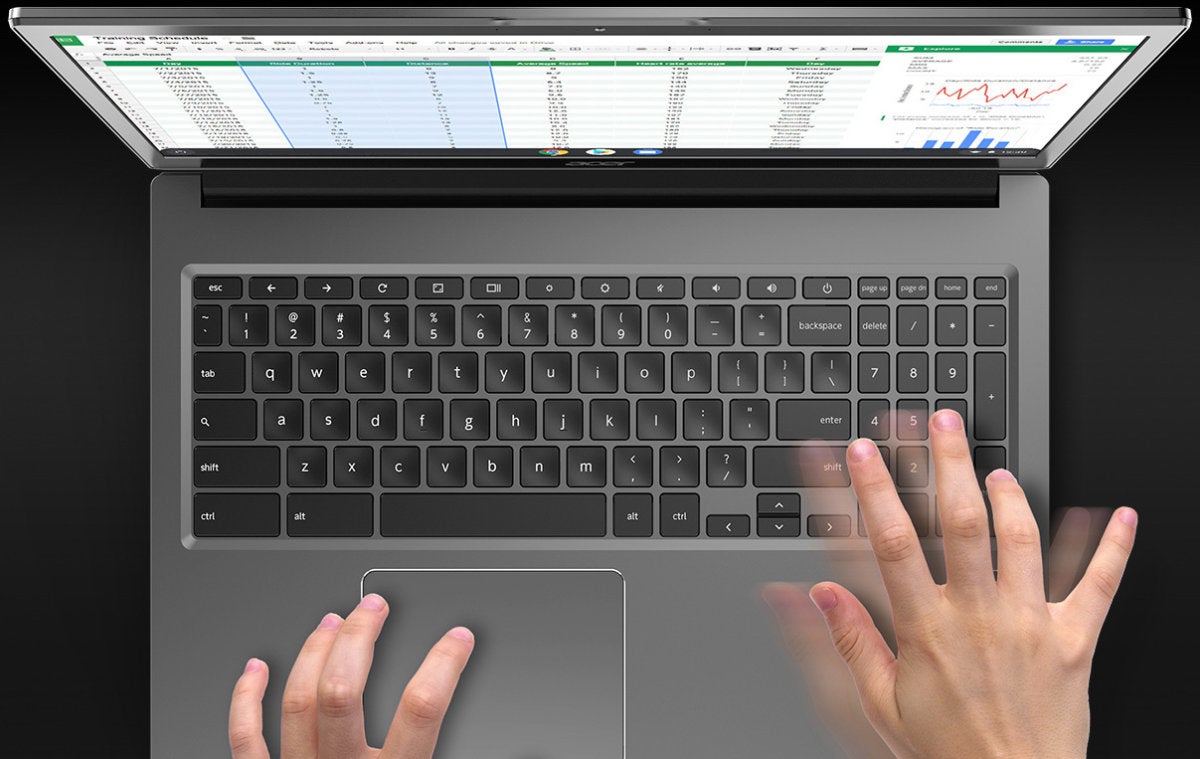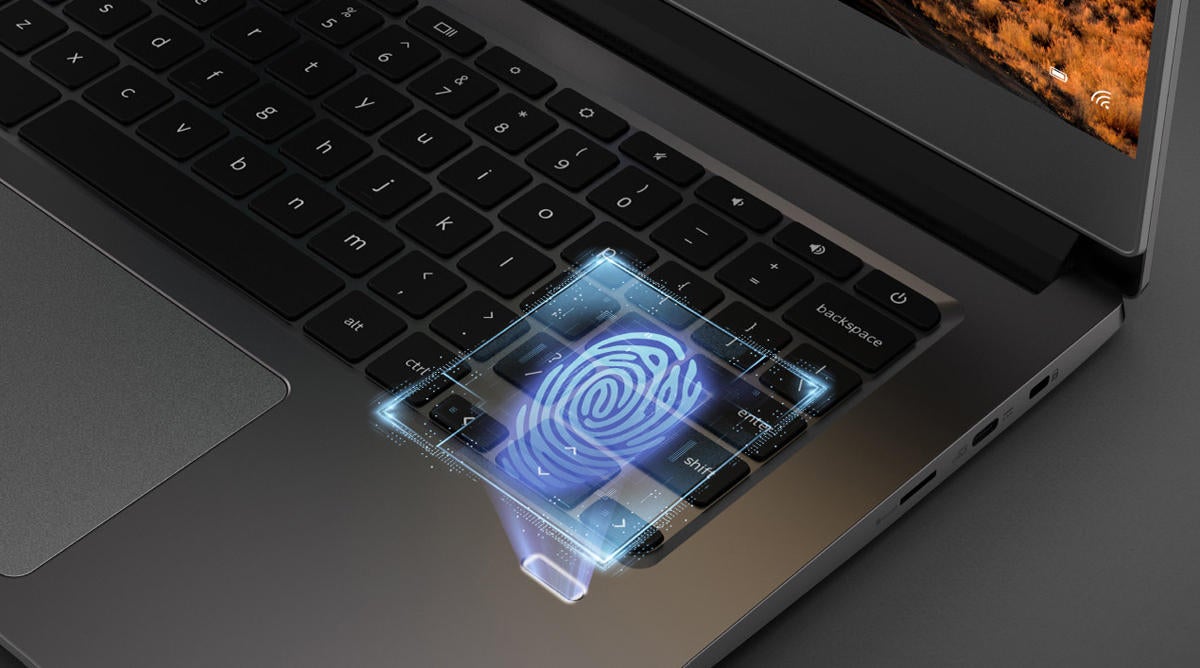We talk a lot about Chrome OS upgrades and how the never-ending stream of new software features can improve your Chromebook experience, but some pretty interesting hardware enhancements are also on the way.
Now, you know me: The idea of devices getting thinner, screens getting sharper, and bezels getting smaller doesn't exactly bowl me over. All that stuff is fine, sure, but it's also just the expected annual progression and nothing worth discussing in any great detail.
These trends, however, are different. They represent genuine changes to what Chromebooks represent and what sorts of tasks they're able to accomplish. And with all of them either available now or openly under development, they're well worth keeping in mind as you think ahead to your next Chromebook purchase.
Here are the trends I'm watching:
1. Expanded keyboards
Crazy as it may seem, up until this year, Chromebooks with full-sized keyboards — including the numpad to the right of the letters — haven't existed.
Now, Chrome OS isn't unusual in this regard. The vast majority of Windows laptops lack numpads, too, and all of Apple's MacBooks have keyboards that are free from that feature. (The MacBooks also have keyboards that are free from basic typing functionality, but — well, that's a whole other story.)
Still, especially in the business world, there are times when a physical numpad can be incredibly helpful. And finally, eight years and countless devices into their existence, Chromebooks are ready to offer that option.
The first numpad-packing Chromebooks arrived earlier this year with the HP Chromebook 15 and the Acer Chromebook 715 devices, and more systems following that pattern seem all but certain to follow.
 Acer
Acer
The Acer Chromebook 715
And you know what? A numpad may or may not be a necessity for you, but there's no question that seeing it show up as a choice within Chrome OS expands the ecosystem's diversity and increases its ability to be taken seriously as a business-class platform.
2. Rugged devices
Rugged Chromebooks are nothing new, but generally speaking, the more durable Chrome OS devices tend to be designed for classroom use and abuse — not more professional purposes. There's a real demand out there for rugged business-caliber hardware, too, though, particularly on the tablet front (think about all the field workers you see with tablets in their hands...). If Chrome OS is gonna grow into its role as the platform of the new "Android tablet," that's an area it has to address.
And from the looks of it, that may happen sooner than later: An enterprise hardware company called AOPEN has revealed an upcoming "Chromebook Commercial Tab" that's designed with heavy-duty field work in mind. I mean, just look at this thing:
 AOPEN
AOPEN
The AOPEN Chromebook Commercial Tab
The device has an integrated Wacom stylus and a screen that's rated "9H" in a hardness scale (yes, there is apparently a hardness scale; do with that what you will). This clearly isn't a computer most of us are going to need, but it's not hard — certainly not "9H"-level hard — to see the void it'll fill in the Chrome OS ecosystem and the way it could expand the role the Chromebook tablet's prepared to fill.
3. Wireless charging — from two perspectives
This next one's a bit of a double-whammy: First, on the Chromebook tablet front, at least a couple of devices are under development with support for wireless charging — meaning you could set the tablet on a regular wireless charging pad and let it power up that way. Nothing revolutionary, by any means, but again, a sensible addition to the platform that's in line with its tablet-role-filling ambitions.
Perhaps the more interesting part is a potential longer-term development that could turn Chromebooks themselves into wireless charging pads — so you could simply set your phone down on your Chromebook's keyboard area to charge it while you work. How handy would that be?
Google filed a patent related to that four years ago, so with any luck, we'll see it come to the surface one of these days.
4. Fingerprint sensors
Biometric security is quickly becoming table stakes in mobile tech, and Chromebooks are slowly but surely catching up with the trend. Google's Pixel Slate (which, remember, won't be getting a second-gen follow-up) brought the first fingerprint sensor into the Chrome OS realm, and now, we're starting to see some more business-oriented devices following suit.
Acer's aforementioned Chromebook 715 along with its lower-end Chromebook 714 sibling were the first to bring fingerprint sensors right onto the Chromebook keyboard — an all-too-sensible spot for on-the-fly authentication.
 Acer
Acer
The Acer Chromebook 714
Other keyboard-sensor-packing systems are known to be under development, and we'll almost certainly see even more such implementations over time.
5. Face unlock
If flopping your phalange down for a second seems like way too much work, don't worry: Signs suggest Google's cookin' up a face unlock system for Chrome OS to go along with its new Project Soli radar system for the Pixel 4.
The specifics of how exactly the system will work are still sparse, but plainly visible progress in the open-source Chrome OS code references ongoing efforts on a new hardware-dependent "Face Detection unit" that could appear in multiple upcoming devices. It's entirely possible specific camera hardware would be needed in addition to certain under-the-hood elements, but it sure seems like we should be seeing something on this front before long.
6. Built-in mobile connectivity
Last but not least is a Chromebook hardware feature we've been talking about for well over a year now — but after a longer-than-expected lull, it's looking more and more like the era of the always-connected Chromebook could actually be poised for its comeback.
An apparent Dell device under testing appears to have built-in LTE connectivity, as my eagle-eyed pal Kevin Tofel of About Chromebooks recently observed. And Google itself has been hammering away at the Chrome OS code to help improve its support for devices with built-in data connections, as the crew from Chrome Unboxed uncovered — something that further suggests this is becoming a serious focus for the future.
Chromebooks started out with built-in data connections as a core feature and distinguishing element, as you may recall, but the feature eventually faded away and became more of a rare exception than a defining rule. While most of us certainly don't need built-in connectivity on a Chromebook these days, though, it really can be a welcome added convenience for on-the-go productivity. It allows you to simply open up your laptop's lid and start working online, without any extra thought or effort, and it prevents you from having to drain your phone's battery by relying on it as a mobile hotspot.
Plus, if Google were to use Google Fi to its advantage — and signs suggest it's at the very least been thinking about that — well, that could open up some pretty interesting possibilities for future Pixelbook products, to say the least.
All considered, one thing's for sure: Between the ongoing march of software progress and the varying levels of hardware developments, the future here in the land o' Chrome OS is looking anything but uneventful.
Sign up for my weekly newsletter to get more practical tips, personal recommendations, and plain-English perspective on the news that matters.

[Android Intelligence videos at Computerworld]


























































